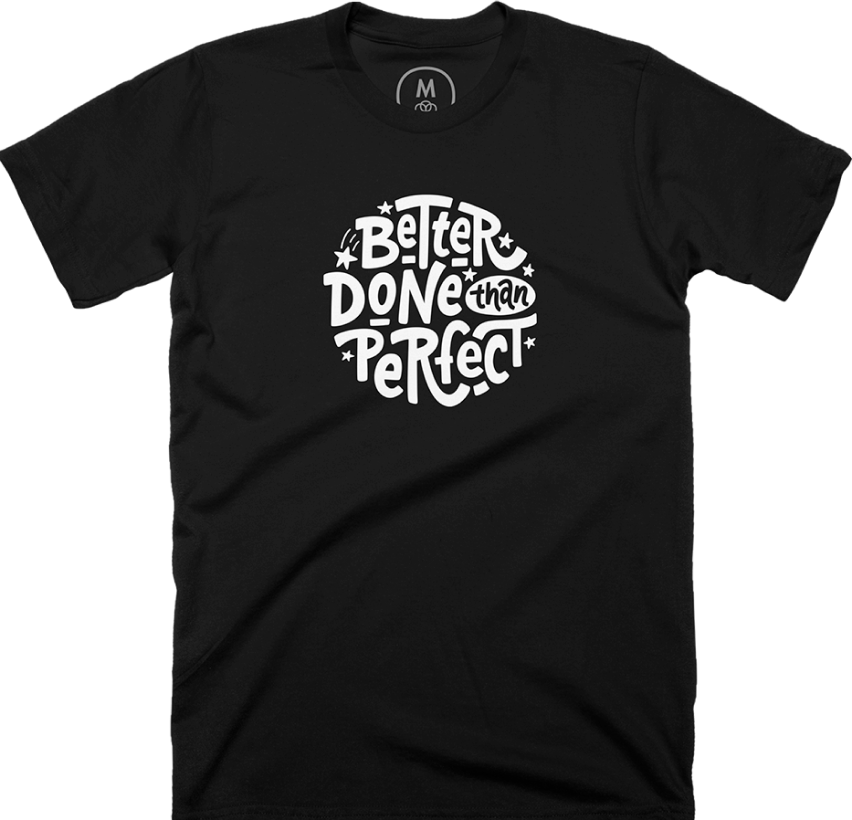Before getting into email strategy for SaaS and ecommerce, Samar started her journey with content writing.
In early 2008, Samar had graduated from university, got married and moved to the UAE — all of these milestones happening in a span of 10 days.
When she tried looking for work in Dubai, all of her attempts were unsuccessful as most jobs required driver’s licenses. However, taking lessons and getting the license would still take about six months to complete.
With all this newfound free time on her hands, Samar wanted to keep herself busy and found content writing jobs that paid $10 an article.
By the time she got her license over a year later, she was already out of content mills and in love with the freelance life she decided to keep pursuing:
“The freelance bug had bit me. I no longer wanted to work full time because I wanted to keep working for myself. And so for 10 years I was a content writer. I wrote for people like Paul Jarvis, internet famous blogs like Copyblogger, big brands like Intercontinental and Marriott, and a bunch of really fun startups.”
But after doing it for almost a decade, she felt burned out and decided to look for other projects that either involved content or copy. Her soul searching led her to a course that featured Val Geisler, who sparked her interest love for email:
“So when she put out a call for subcontractors, I messaged her asking her to take a chance on me, and she did.”
Samar worked on a re-engagement sequence for Val and her research for the project further ignited her passion for email:
“I didn’t know much about email apart from the ones that I was sending out to my newsletter subscribers at the time. And so during the first week, all I did was research. For six to eight hours I researched about emails, re-engagement emails, and I was the happiest I’d been in a long time.”
Writing emails for ecommerce vs SaaS
Samar specializes in onboarding and retention-focused emails for SaaS and lifecycle emails for ecommerce businesses. She maps out the email journey from the moment somebody becomes a subscriber or user until the moment they churn, become a VIP customer or long-term user.
Because the lifecycles are different for the two industries, they also require different types of emails:
“For ecommerce it’s always about making the sale. For SaaS, it’s about getting people to sign up, use, and continue using your software. The only thing common between the two is the word ‘email,’ but the types of email you need are different.”
The extended onboarding flow
One of the biggest missed opportunities for both ecommerce and SaaS is not sending emails after the user has converted:
“That is the key point where you need to continue sending them emails so that they keep feeling good about their decision to become paying users.”
And this is why you should do an extended onboarding flow to show users other features of your software that can make their life easier:
“Continue nurturing them into using your software until they either become a power user, a long-time user, or both.”
This also helps you reduce churn in the long term:
“This is the fastest way to reduce long-term churn. Yes, there are things you can do to plug that churn problem short term, but if you do this right and set it, your overall churn will reduce.”
The long game of email
Samar shares that the common misconception among companies (especially ecommerce businesses) is that they think of email as a silver bullet to their problems and it will get them quick results:
“When brands are struggling and they’re at their Hail Mary stage: their Facebook ads aren’t working, their Instagram reach has reduced, they aren’t getting a lot of traffic to their website, so sales are slowing down.
They’re like, ‘Okay, now we need to start doing email marketing,’ and they come to me already cash-strapped because they’re struggling to make sales. And I would tell them, ‘this is the wrong time to come to me.’”
She says that email marketing is a long game and it takes time to set up all the emails they will need. This is why Samar advises companies to start looking for email marketers earlier:
“Even for SaaS companies, I always say, ‘you need to start looking for email marketers at least three months before you need those emails,’ because that is how long it’ll take for us to do customer research, surveys, interviews, find the themes and do the analysis to find out what is going to make your users convert.”
Why ecommerce and SaaS businesses should care about email
In her experience, Samar has come across ecommerce and SaaS founders who view email as something nice to have instead of a fundamental marketing strategy — which is a fundamental mistake:
“You’ll find people who’ll say, ‘Email is nice to have. It’s just not something we want to focus on right now because all these other channels are working well for us.’ But all these other channels will eventually saturate and you might not own them. Ecommerce brands saw this when their Facebook ad costs went up or their Instagram reach dwindled.”
Her advice for founders?
“If there’s one thing I could tell founders across the board, it is that you need more time for emails than you think you do.”
Increasing conversions from your email list
Before planning your email journey, you have to ask yourself the following questions:
- Why are we sending this email?
- Whom are we sending this email to?
- What is the purpose of this email?
- What action do we want the user to take?
- What email are we going to send them next?
A typical SaaS email journey usually starts with a welcome or nurture sequence:
“What is the purpose of that welcome sequence? What action do we want them to take? This is where strategic decision making comes into play. Usually for a B2C SaaS company, that would be signing up for a free trial.”
When the user does sign up for a free trial, they would then go through the free-to-paid onboarding flow so you can convince them to convert. And when they do convert, the next goal would be to have them upgrade to a higher or annual plan:
“This is where my extended onboarding flow comes in. If you have tiered pricing, then our goal for the extended onboarding flow is to help users push against the limits of that tier so that we encourage them to sign up for the next tier. What it does is it increases our revenue. And if you don’t have a tiered pricing plan, we want to move them to the annual plan so that our annual recurring revenue stabilizes a little bit.”
But what do you do if they don’t convert?
Samar stresses that you need to provide multiple opportunities to convert email subscribers and users. You can keep sending them newsletters, updates, case studies, and event invitations like webinars or training. These events can be useful in finding out what type of content engages your list:
“You are going to understand what’s important to your list based on that engagement. For example, more people showed up for onboarding emails compared to in-app messaging. That informs you what kind of content you should be sending to your list.”
Making emails more friendly, human, and personable
While email broadcasts and sequences are usually done by a team and are automated, you should still make them sound like they come from a real person.
Use a person’s name
“For example, it can’t be just from Userlist, right? It needs to be Jane at Userlist or Jane from Userlist. Your emails also need to have the same sign-off.”
Encourage replies from users
Don’t use no-reply emails when sending them to encourage engagement with users:
“Set up a customer service app that will filter those messages so that your inbox isn’t getting flooded, or create a separate inbox that your customer service team can handle but encourage replies to your emails. It is one of the fastest ways of creating a connection and engaging subscribers.”
Use email as a communication tool
Samar shares that whenever she shares a teaser of her upcoming newsletter on Twitter, she uses email as a communication tool to further engage with her subscribers:
“I tweet a teaser on Twitter and tell people, ‘sign up if you want to know more about whatever email fight I’m picking that week.’ That always gets me new subscribers and new subscribers are the most engaged subscribers. Often, they’ll reply to that email and then we’ll have a conversation.
They’ll either appreciate it or they’ll debate with me, but that’s engagement. And once somebody engages with you, you are no longer just a company to them. You are now a person at the end of the screen, and that makes the biggest difference.”
Doing discounts the right way for SaaS
While SaaS companies do take advantage of the opportunities during Black Friday and Cyber Monday, new users will often churn when they need to pay the full price:
“There are certain companies that will discount their pricing by 70% and loads of people will sign up. The smarter ones will sign up for the annual plan. But during the next year, we are served with such a high bill that we were not expecting because now we’re paying full price.
What a discount does is it gives you that initial buy-in, but if you’re not doing the work to build and nurture that relationship, you are going to lose them when the bill more than doubles.”
Samar says that it’s important to set reminders for these users so they don’t get surprised when the full price kicks in. This might also open up other opportunities to retain those users:
“When the renewal comes in, please set up reminders. ‘You were on our Black Friday sale with a 70% discount, your renewal is coming up.’ Don’t just silently charge them the full price. Yes, you are going to churn users, but maybe that’s another opportunity where you can bring them back like, ‘We cannot give you a 70% discount this year, but how about a 50% discount?’ That can slowly bring them to full price rather than just giving them that shock.”
Final advice
Do send more emails than you’re sending right now.
“We always worry about spamming our users and subscribers. Let me tell you, nobody’s opening all your emails. Nobody’s opening their inbox and waiting for an email from you, so they’re missing out on a lot of your emails. They’ll open it when the time is right or when the subject line is right.”
Don’t treat your customers like data points.
“You could have thousands of users, but your emails are being read by one person across the screen. Make sure that you are treating them like a person.”
Thanks for listening! If you found the episode useful, please spread the word on Twitter mentioning @userlist, or leave us a review on iTunes.


